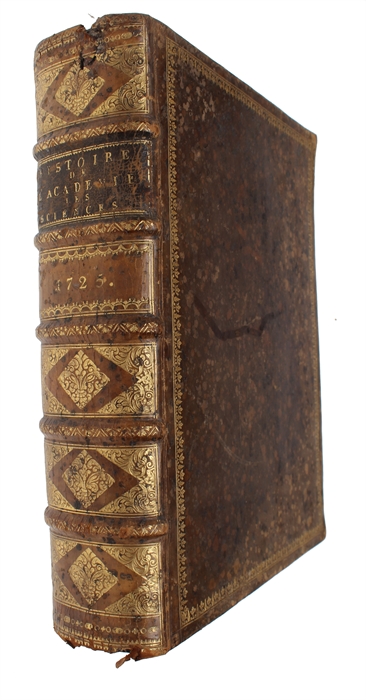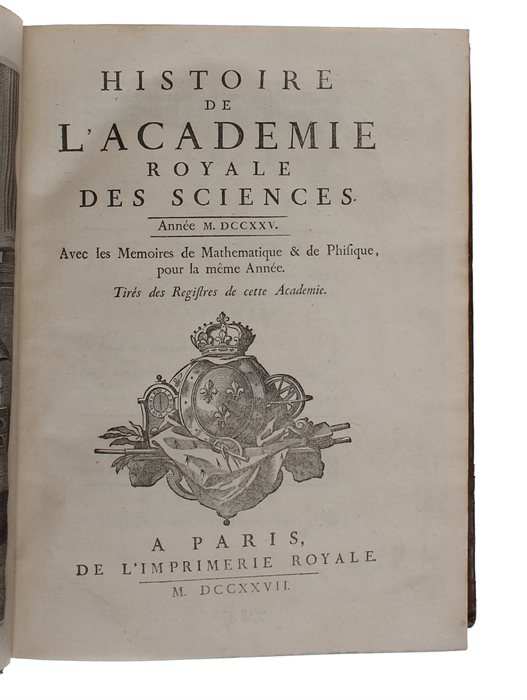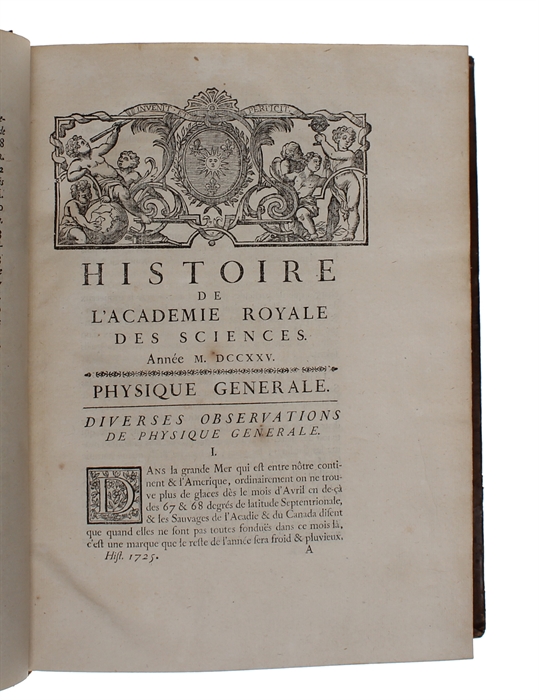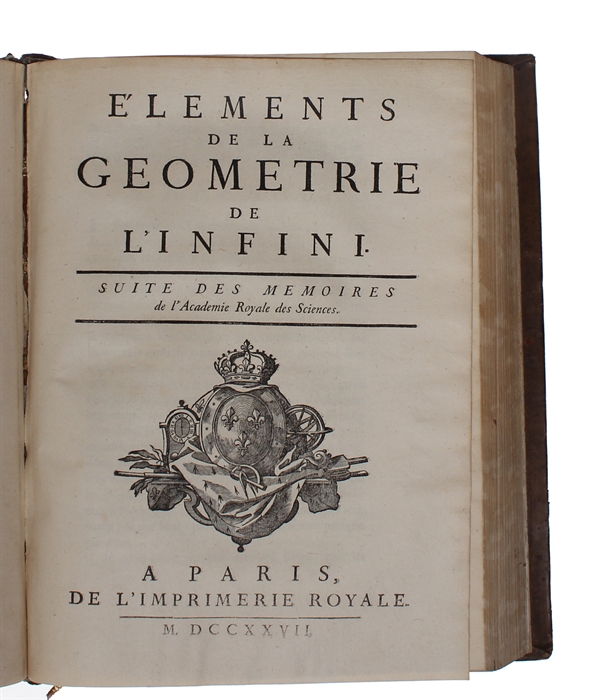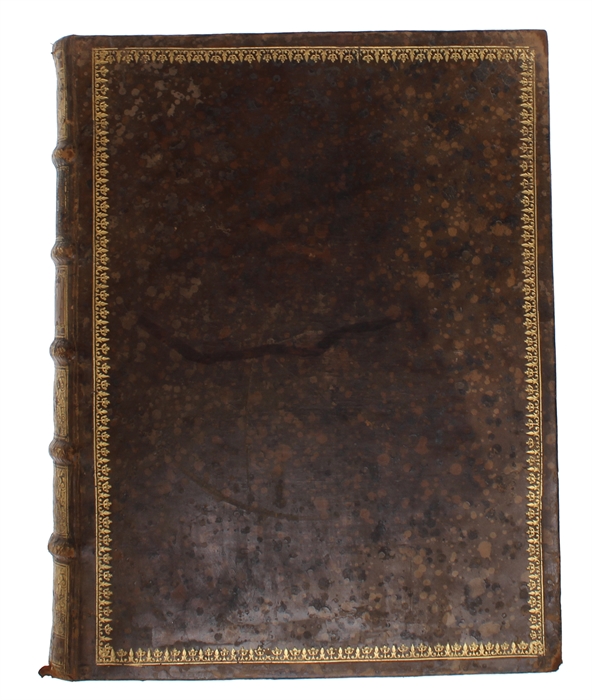(FONTENELLE, BERNARD LE BOUYER de).
Élements de la geometrie de L'Infini. Suite des Memoires de l'Academie des Sciences.
Paris, L'Imprimerie Royale, 1727.
4to. Fine contemp. full calf. Raised bands. Richly gilt spine. Tome- and titlelabels with gilt lettering. Gilt borders on covers. A small nick in leather at upper compartmen. Light wear to foot of spine. (26),548, pp., 1 folded engraved plate. Clean and fine. The offered item includes the entire volume of "Histoire de L'Academie Royale des Sciences. Années MDCCXXV. Paris, L'Imprimerie Royale, 1727", of which the memoir of Fontenelle is printed as a "suite". With the engraved frontispiece. (6),154,354,(2) pp., 14 partly folded engraved plates. (Original papers by: Maraldi, Petit, Nicole, Winslow, du Fay, Pitot, Delisle d'Aine, Geoffroy le Cadet, Reaumur, Nicole, Cassini, de Mairan, Saurin, de Lagny, Fizes).
First edition. "In 1727, as a "Suite des mémoires de l’Académie royale des sciences," he published the Élémens de la géométrie de l’infini. Some doubted whether it was really the work of a mathematician, but the author believed it was and attached great value to it. He had worked on it for a long time, probably since the period of his preface to the Analyse des infiniment petits. The term élémens is to be understood in the sense of "first principles." According to Fontenelle, none of the geometers who had invented or employed the calculus of infinity had given a general theory of it; that is what he proposed to do. The work is divided into a preface relating the history of this branch of calculus and into two main parts: "Système général de l’infini" and "Différentes applications ou remarques." The author discusses "the infinite in series or in progressions of numbers" and then examines "the infinite in straight and curved lines," in the words of the Abbé Terrasson, who reviewed the work in the Journal des sçavans (July-October 1728)." There was a great deal of discussion in the scientific community about this work, in which mathematicians found numerous paradoxes. Johann I Bernoulli, for example, in his correspondence with Fontenelle allowed his criticisms to show through his praise: he did not understand what was meant by finis indéterminables. Fontenelle attempted to defend his theory and above all his distinction between metaphysical infinity and geometric infinity: one must ignore the metaphysical difficulties in order to further geometry, and the finis indéterminables ought to be considered "as a type of hypothesis necessary until now in order to explain several phenomena of the calculus" (letter to Johann I Bernoulli, 29 June 1729). "The orders of infinite and indeterminable quantities, like the magnitudes that they represent, are only purely relative entities, hypothetical and auxiliary. The subject matter of mathematics is only ideal," according to the terms of a "Projet de rapport" of Dortous de Mairan to the Academy on this work." (DSB).
Order-nr.: 59036

